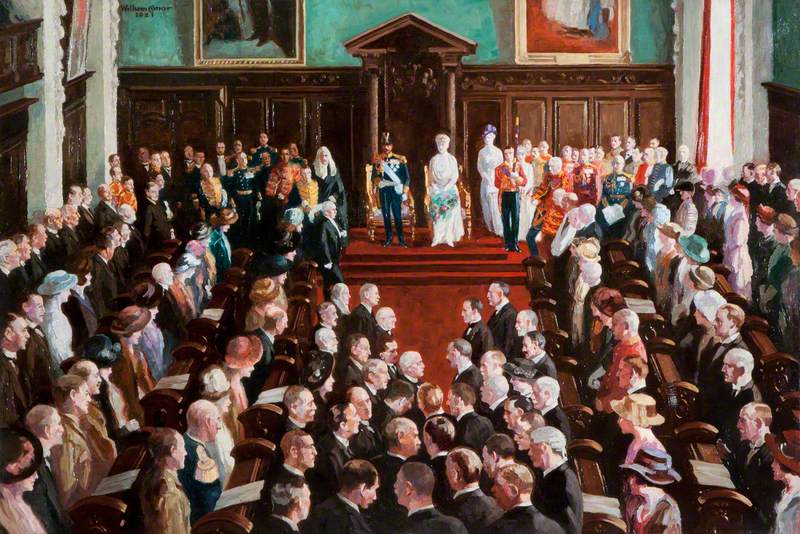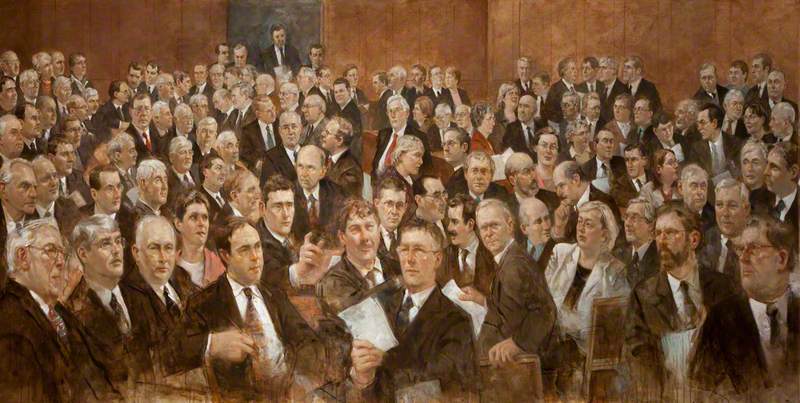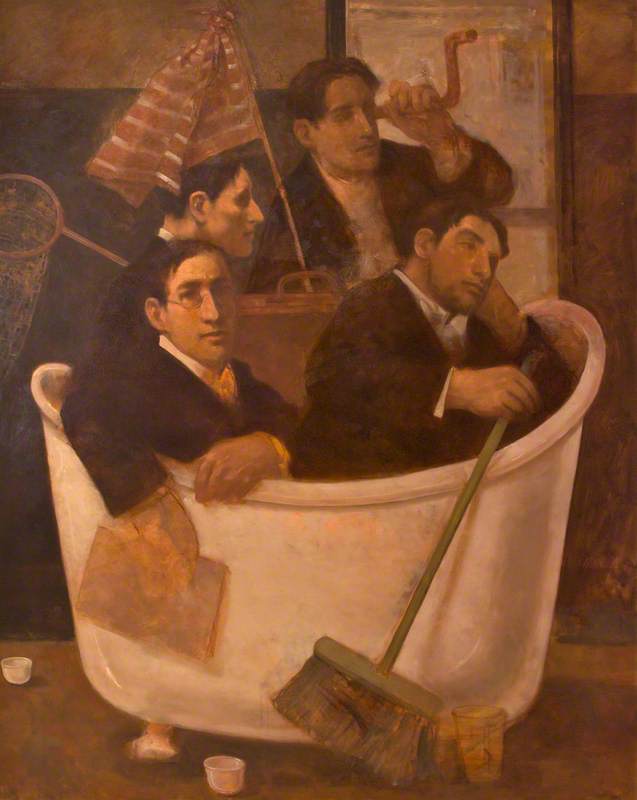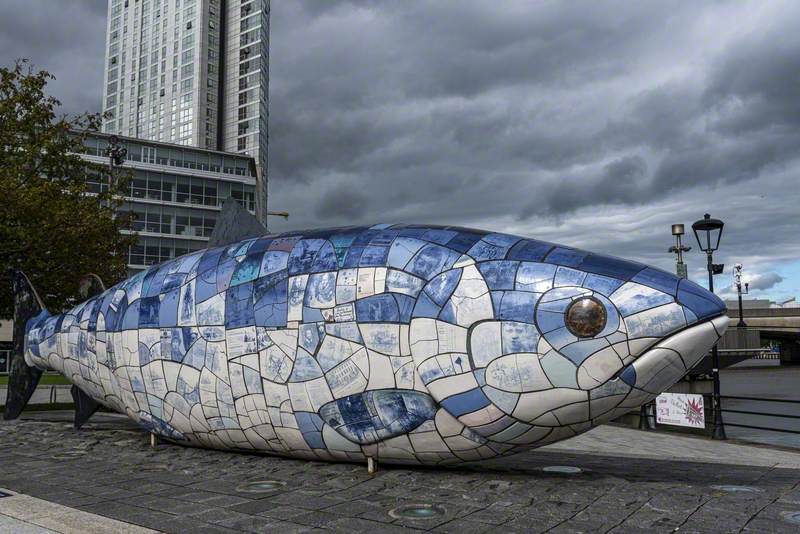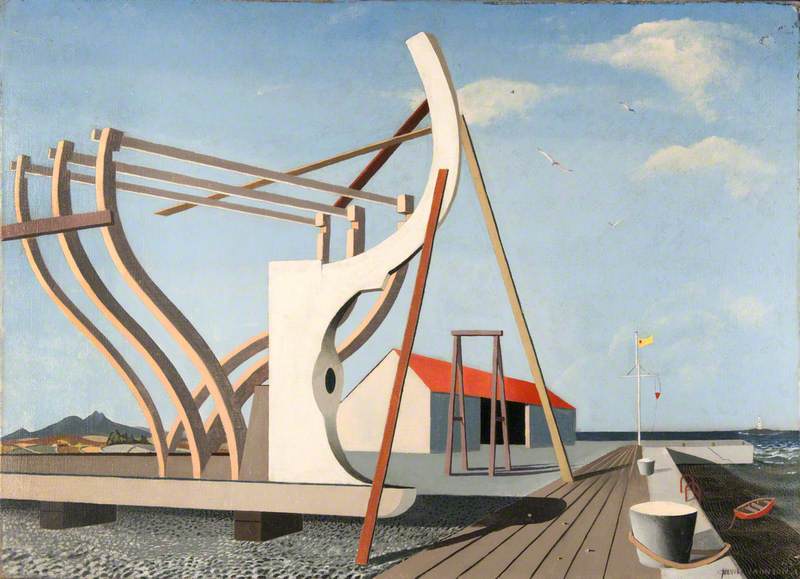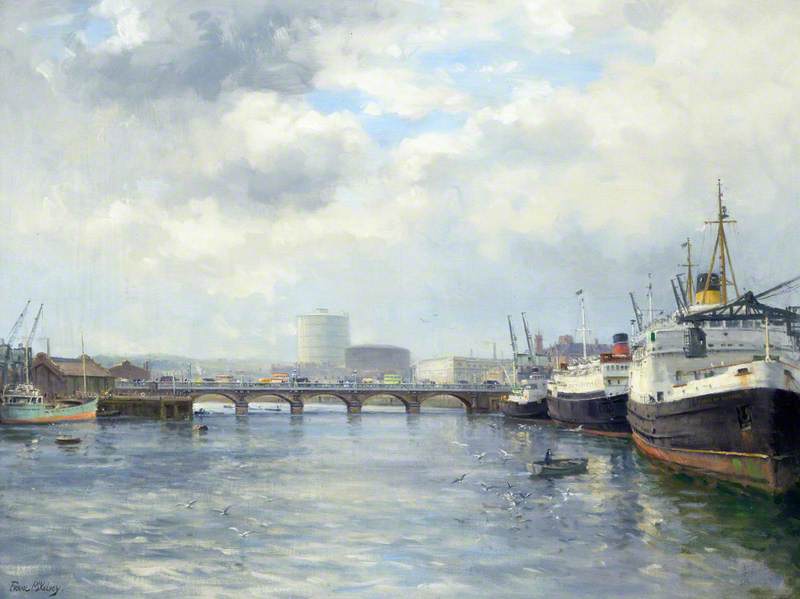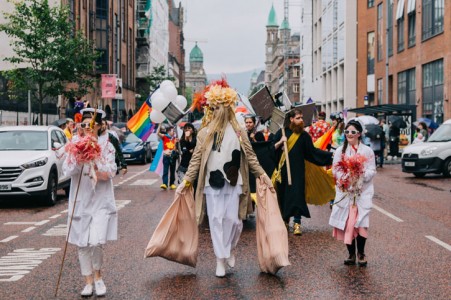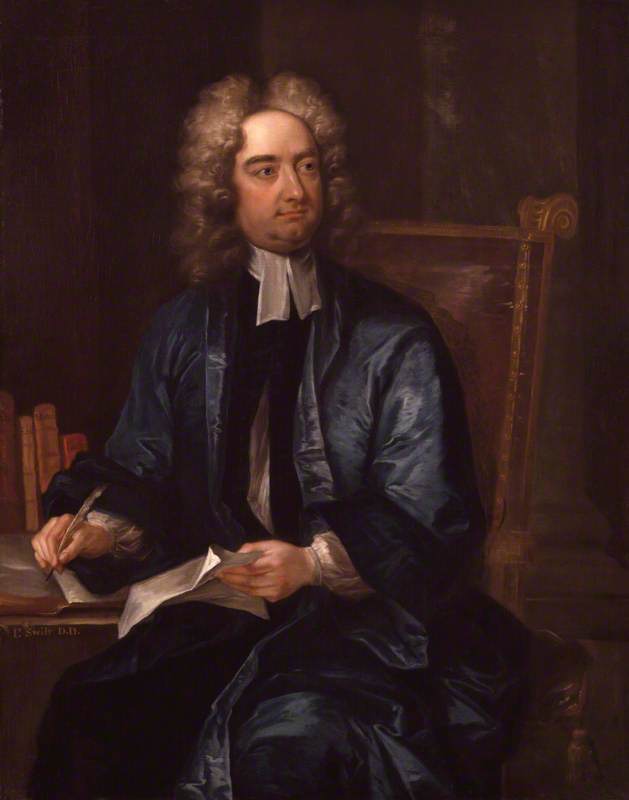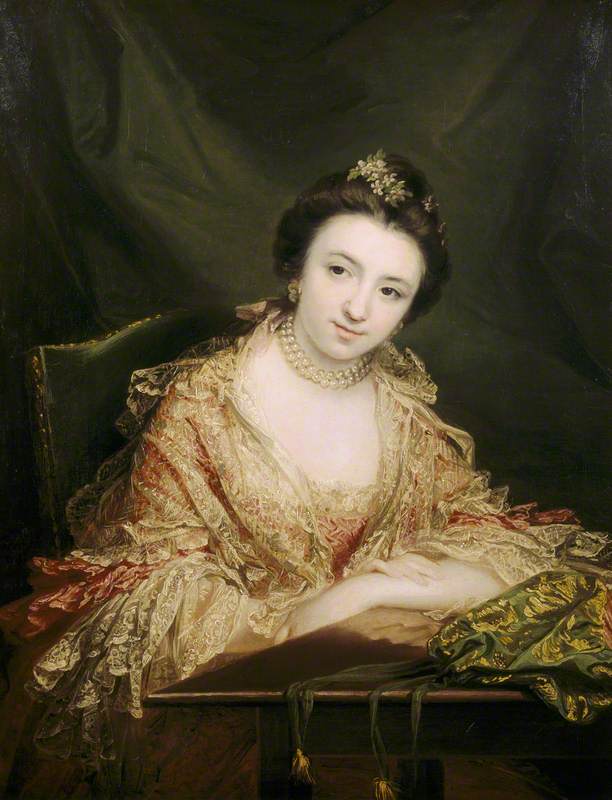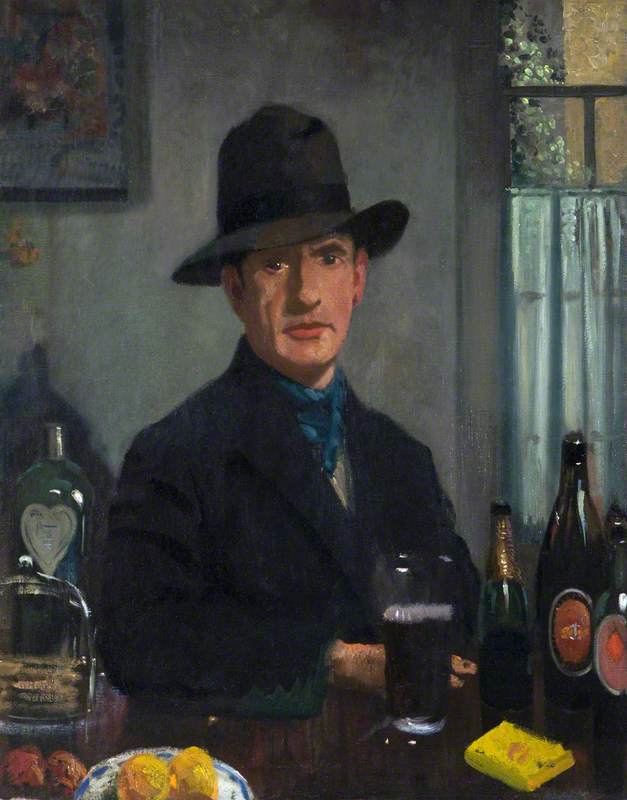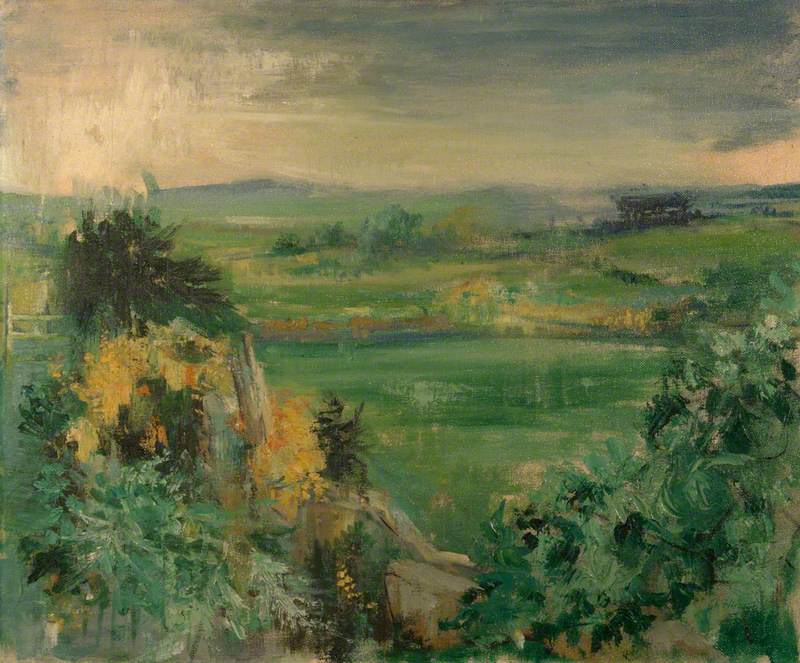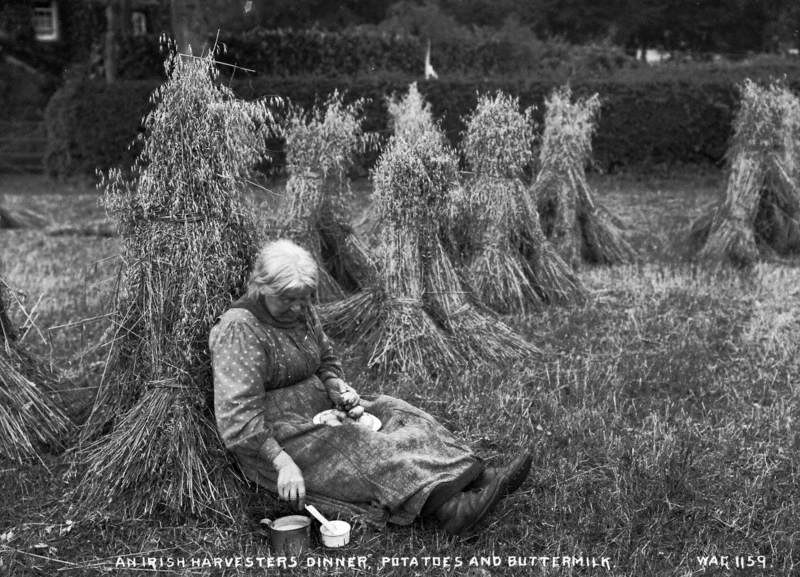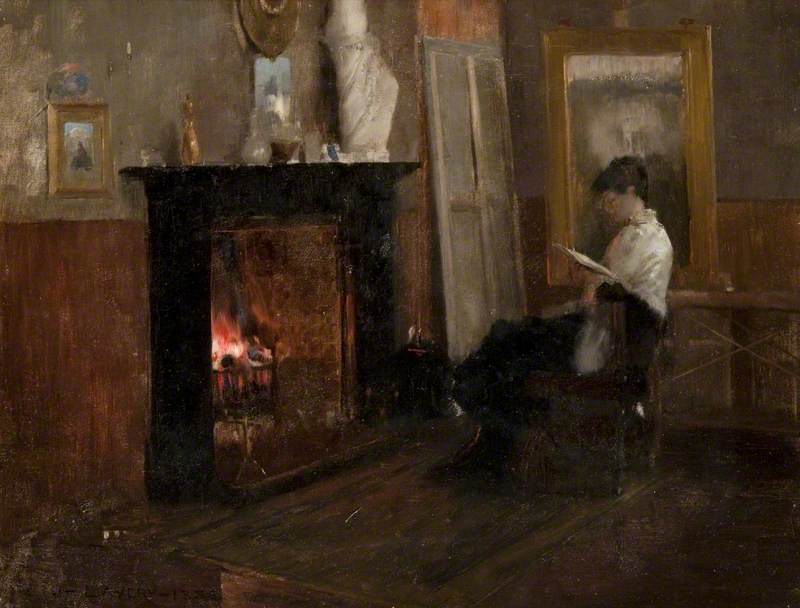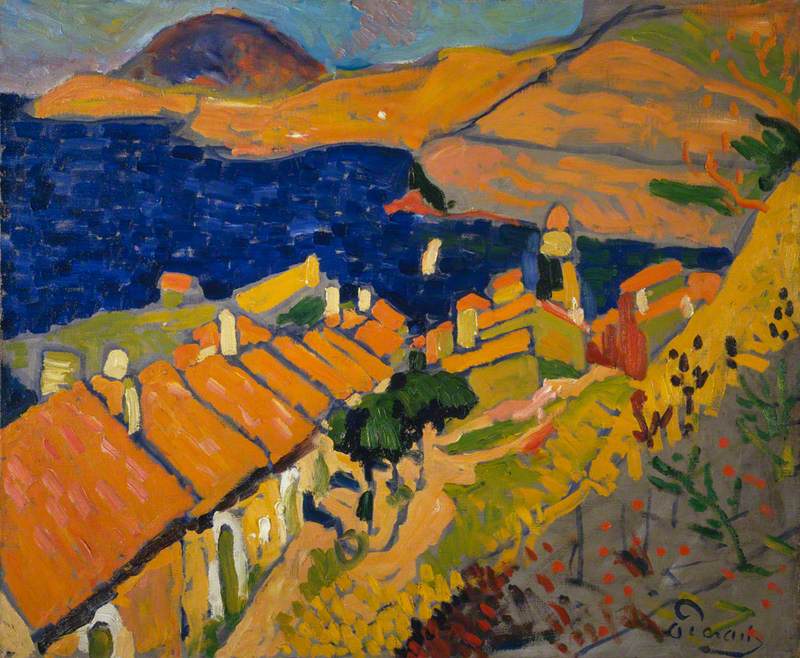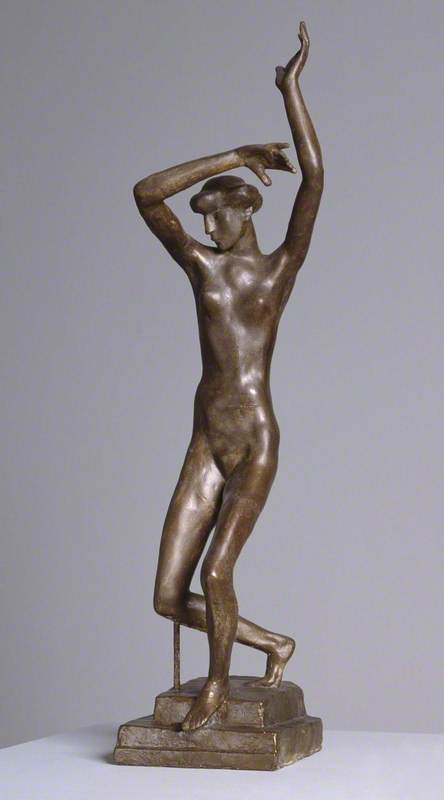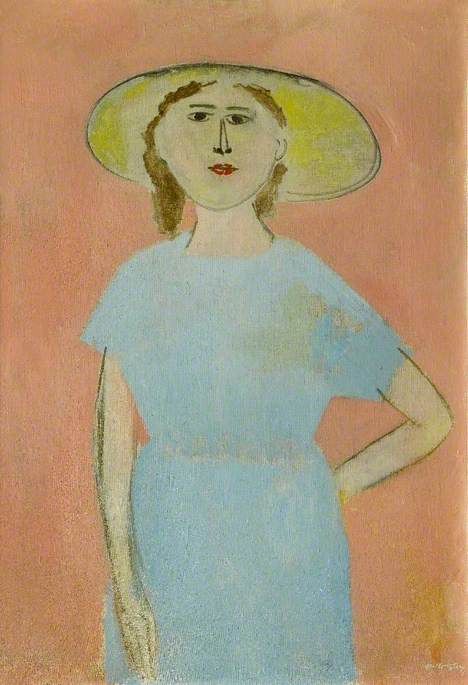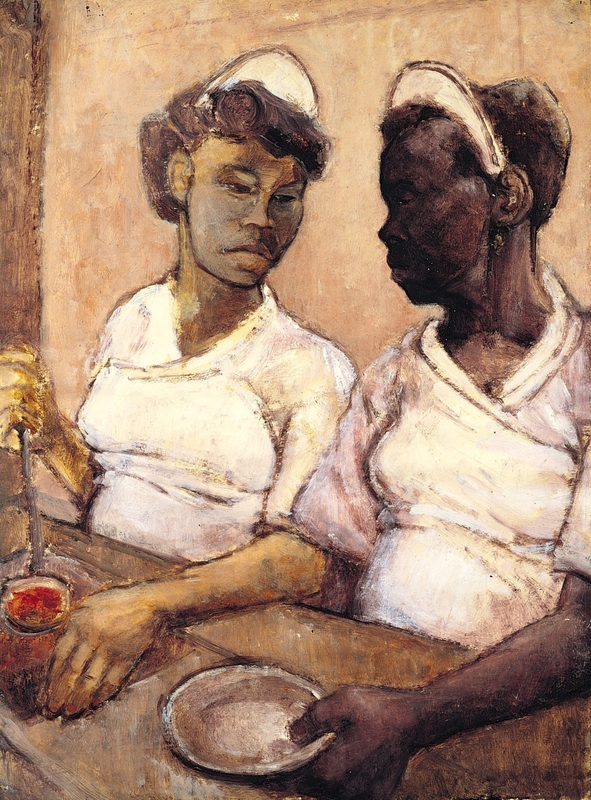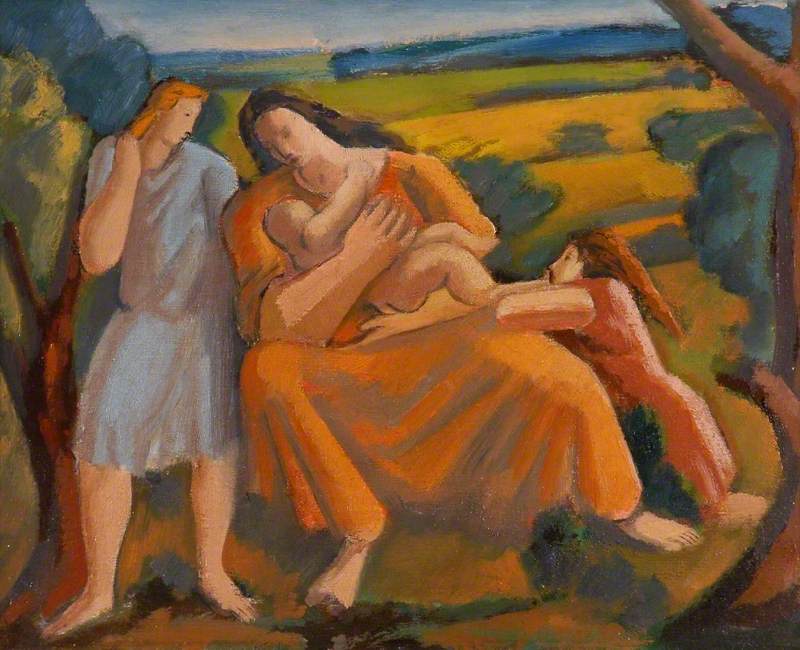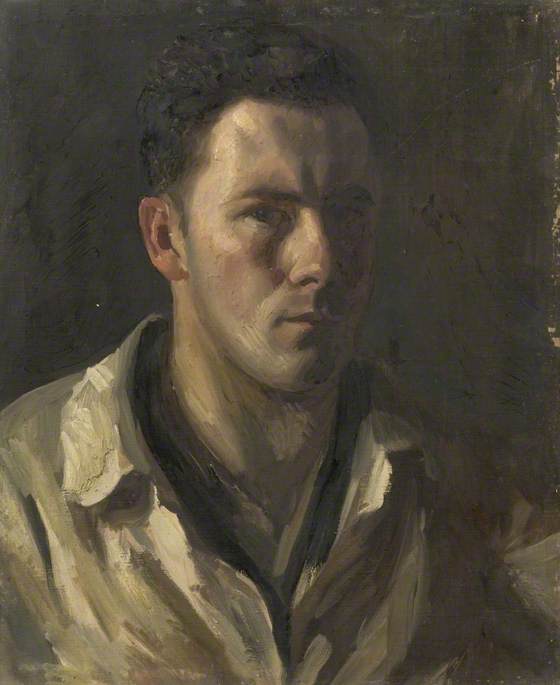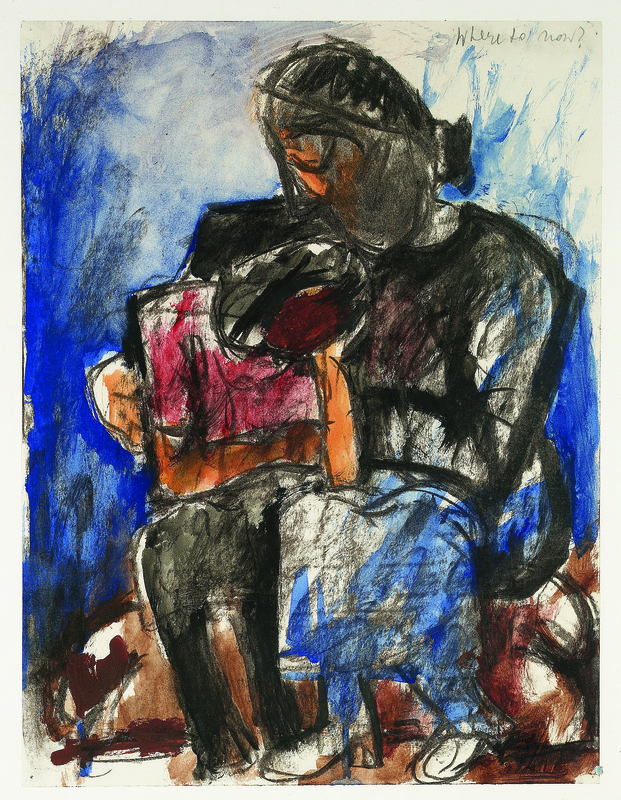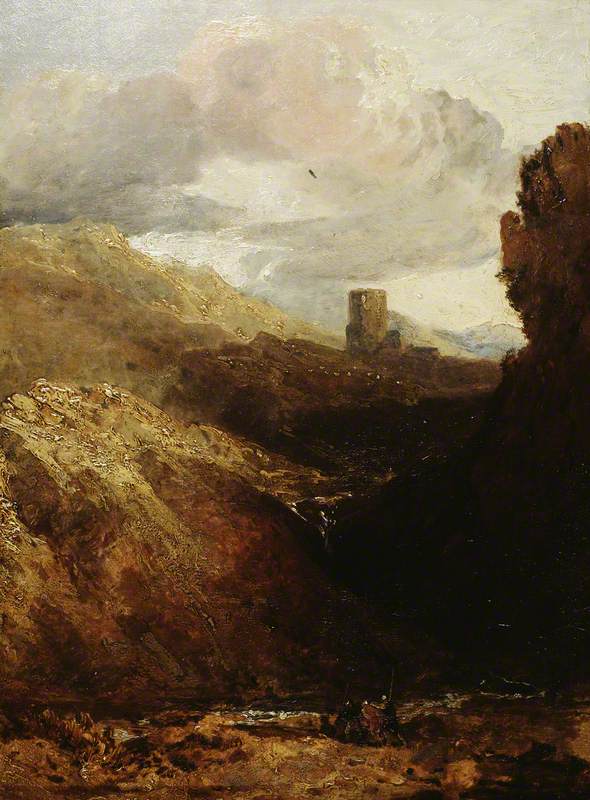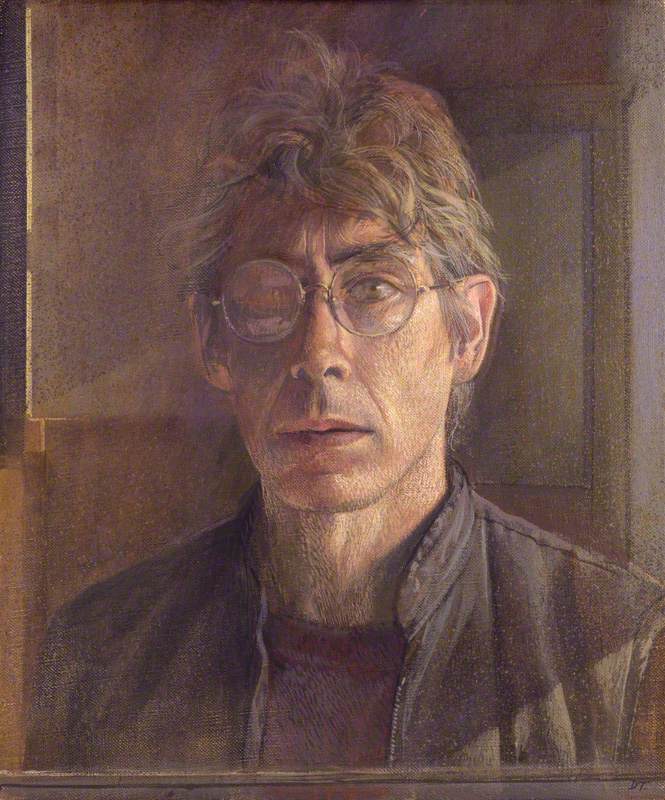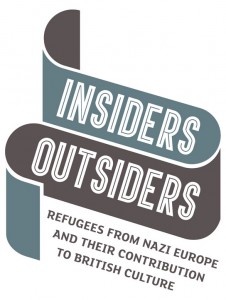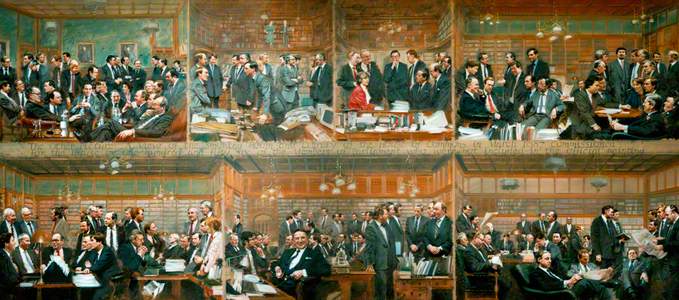Following the signing of the Good Friday Agreement on 10th April 1998 and the subsequent referendum, voting took place across Northern Ireland in June of that year to elect members of the Northern Ireland Assembly that would sit at Parliament Buildings, Stormont.
A young artist from Belfast, Noel Murphy, was commissioned in September 2002 to paint a group portrait of the entire Assembly: all 108 Assembly Members as well as sundry officials of the Speaker of the Assembly's staff. The painting was to follow the only other painted record of this political institution, State Opening of Parliament, which shows the opening of the first Northern Ireland Assembly by George V by another Belfast artist, William Conor. This work and Murphy's large commission now hang in the Senate Chamber in Parliament Buildings at Stormont.
Noel Murphy's record took four months to complete, from making the first architectural sketches of the Chamber in September 2002 to finishing the painting in January 2003. Murphy, like Conor before him, used photography to record individual sitters as aide-mémoires. Whereas, as Judith Wilson noted, 'Conor used a black and white photograph which was to aid him greatly when he altered the positions of the Members of the House of Commons who directly faced His Majesty…', Murphy exploited a wider range of recording techniques. All sitters were photographed or filmed on a camcorder before being sketched in Conté pencil on paper and then painted in monochrome.
The majority of the Members' portrait studies were small-scale works executed quickly in Murphy's Linenhall Street studio, but around ten to twelve prominent figures – such as Lord Alderdice, Gerry Adams, Martin McGuinness, John Hume, David Ervine and Ian Paisley – were larger in scale. Each was painted during an extended sitting which also incorporated an informal interview or conversation between the sitter, the artist and the political journalist and writer Eamonn Mallie, who had been instrumental in the conception of the commission.
William Conor's painting is dominated by static, serried ranks of sober gentlemen in suits and ladies in hats, the configuration hampered by the large number of sitters to be recorded, by social etiquette and the physical constraints of the architectural setting. Murphy, at pains to avoid this compositional pitfall, looked for alternatives, from art history – such as Rembrandt's collective portraits of syndics and artful groupings of observers at anatomical dissections – and from more recent sources, such as Andrew Festing's vignettes that make up The Other Picture, on display in the upper waiting hall of the Houses of Parliament in Westminster. Festing's work shows a view of the smoking room and library of the House of Commons in March 1988.
Murphy's drawings and large-scale oil sketches reflect Festing's construction, organising his subjects into conversational groups and using the Chamber's seating arrangements to channel the eye around the composition, avoiding monotony and injecting a sense of lively debate into the proceedings. The artist was further aided by the Speaker's suggestion that the finished work should reflect the workings of the Assembly by highlighting the dynamism and tension engendered by an imminent vote by the Members (a number of whom in later years were subsequently elevated to the House of Lords), hence the title of the work: The House Will Divide. As Mallie commented, 'This is a reference to the moment when a vote is about to take place and the sedentary and settled format suddenly falls apart.'
Murphy placed sightlines running from the Speaker at the apex of an offset triangle to the rear of the Chamber through David Trimble and Seamus Mallon (picked out with red ties, wearing glasses and making eye contact with the viewer) to Ian Paisley and John Hume as anchors to the left and right in the foreground.
Whilst most figures are depicted in three-quarters view or in profile, the Rembrandt-esque central grouping of men faces the viewer directly and Murphy makes playful art historical references with the placement of their hand gestures. Degas's portrait of Tissot is the origin of Nigel Dodds' hand holding a pen or cane. Caravaggio provides the source for Ian Paisley Jnr's outstretched hand (The Supper at Emmaus) and those of Reg Empey (The Incredulity of Saint Thomas), while Peter Robinson holding a paper in his right hand references the portrait of Johann Joachim Winckelmann by Anton Raphael Mengs.
The composition has a sense of dynamism that recalls a remarkable moment, one full of optimism but also uncertainty, and it might seem appropriate that Murphy titled another painting from around this period The Optimist's Journey. The House Will Divide, this well-known painting, is already more than 20 years old and there is some poignancy that a number of those portrayed are no longer with us. Noel Murphy's canvas has already taken on something of the aura of an historical document.
Amanda Croft, art historian and curator
This article was supported by Arts Council Northern Ireland
Further reading
Judith Wilson, Conor 1881–1968. The Life and Work of an Ulster Artist, Blackstaff Press, 1981
Eamonn Mallie, 'Background to a Portrait of the Northern Ireland Assembly in Session' in Paintings, Drawings and Photographs towards 'the Northern Ireland Assembly in Session', The Emer Gallery, Belfast, 2003
